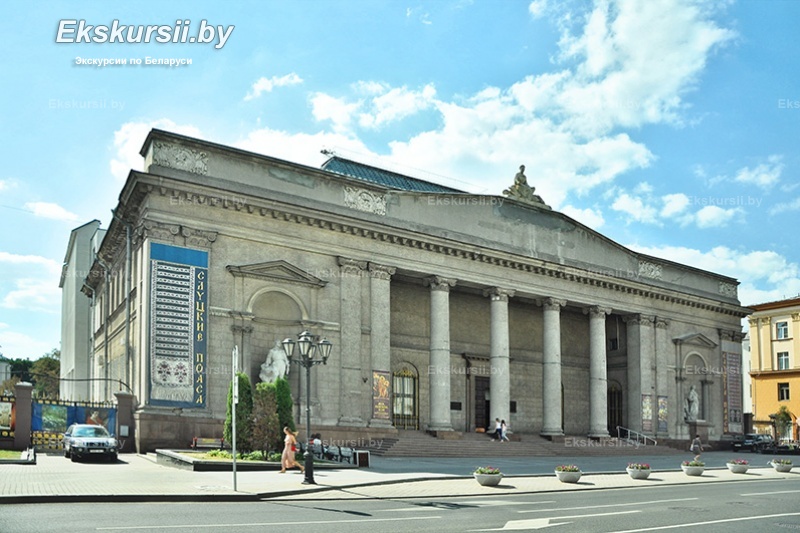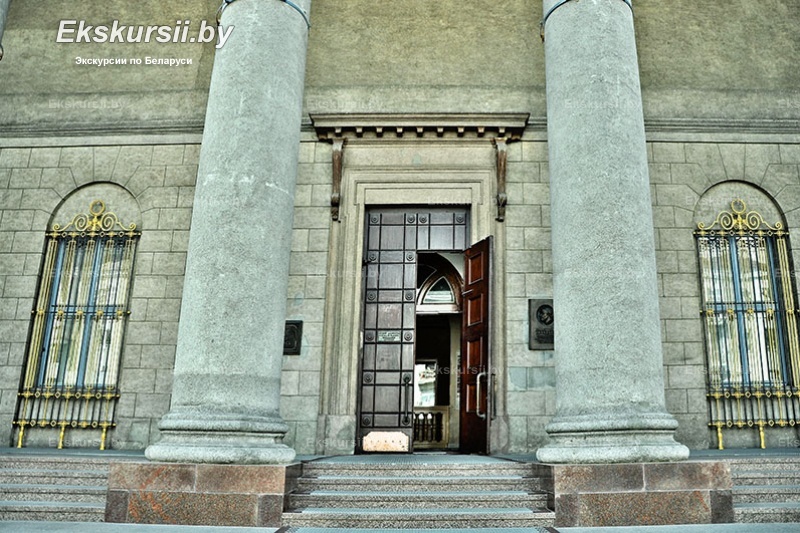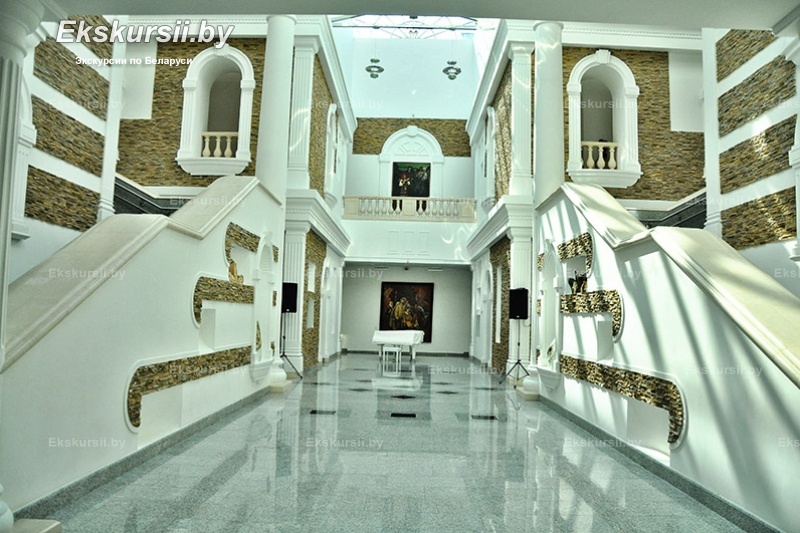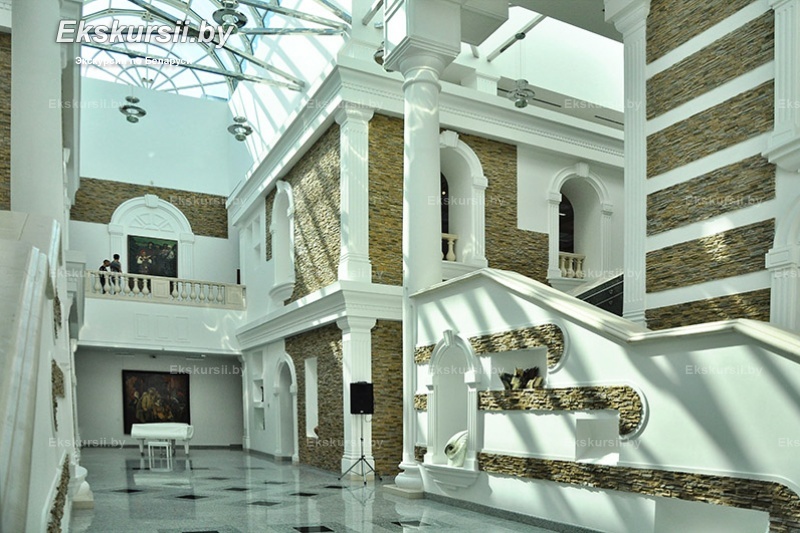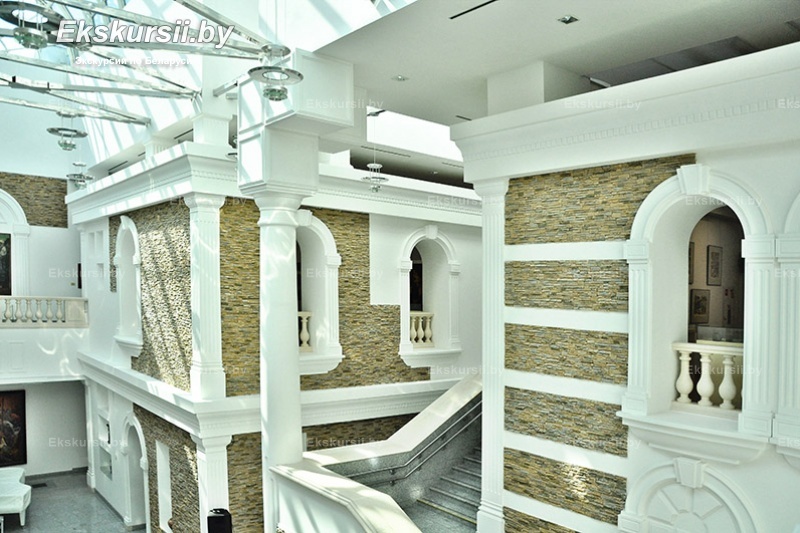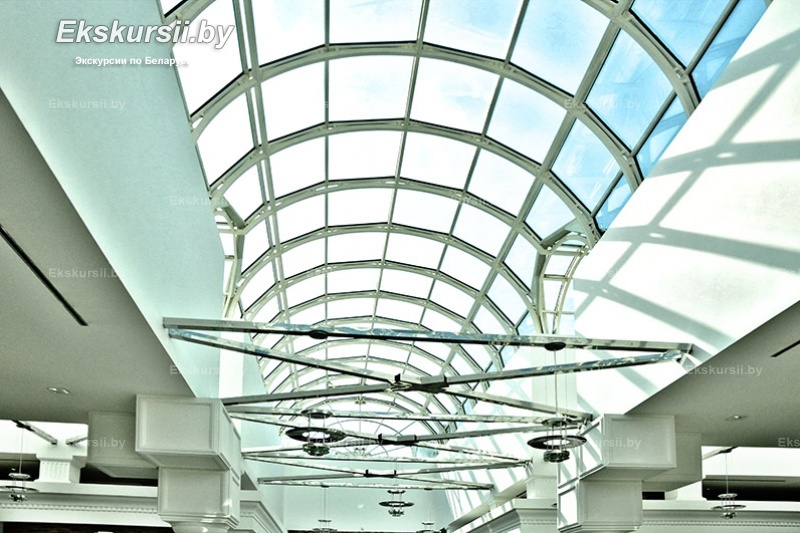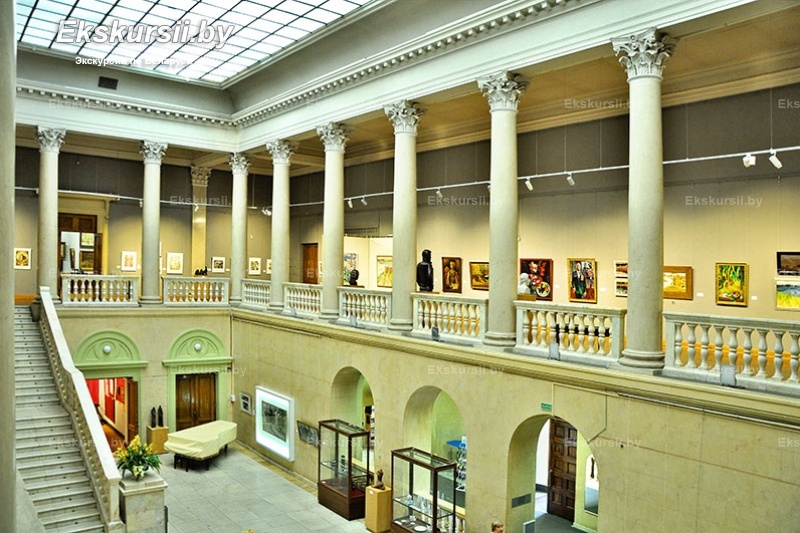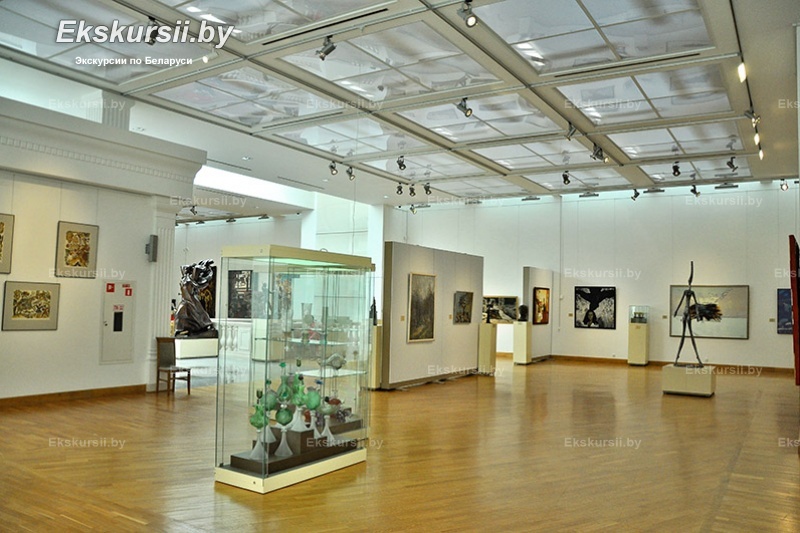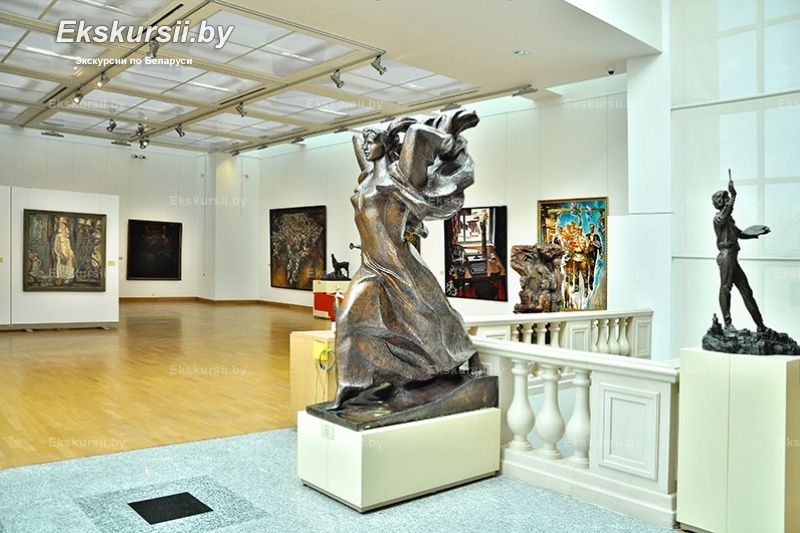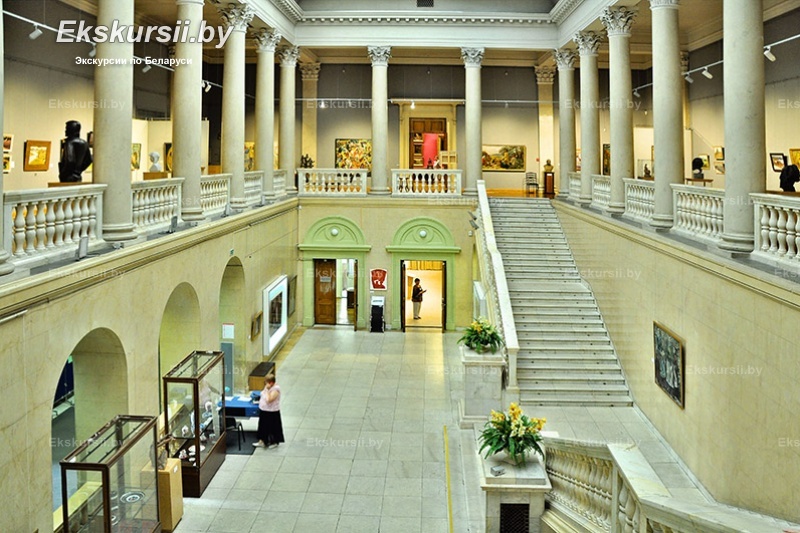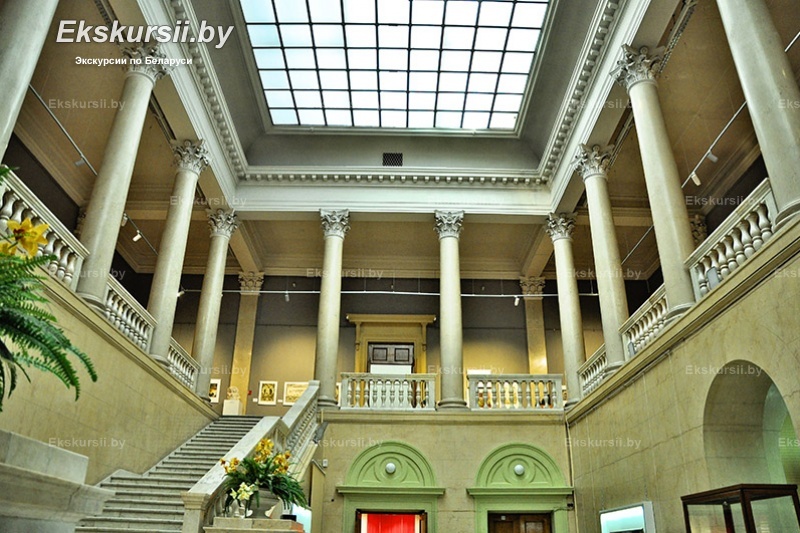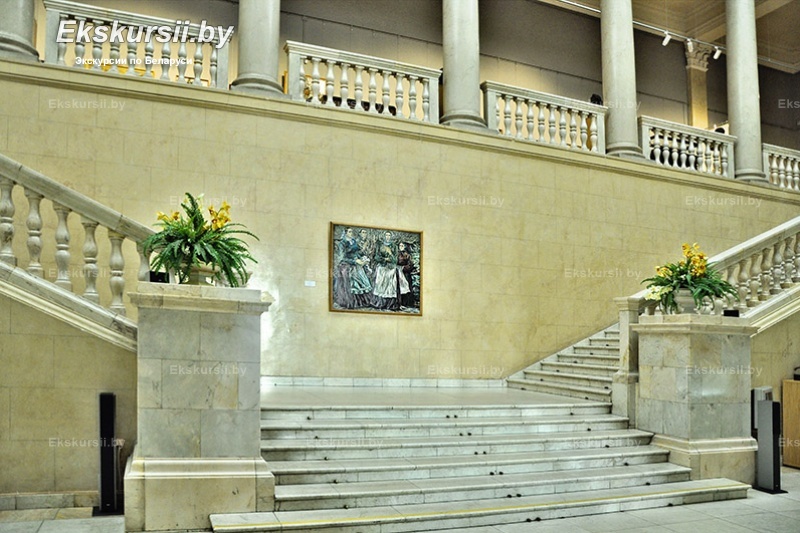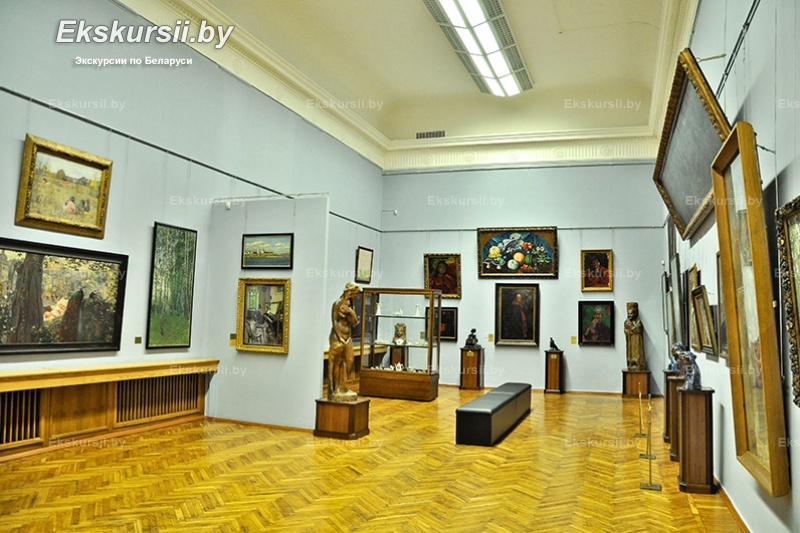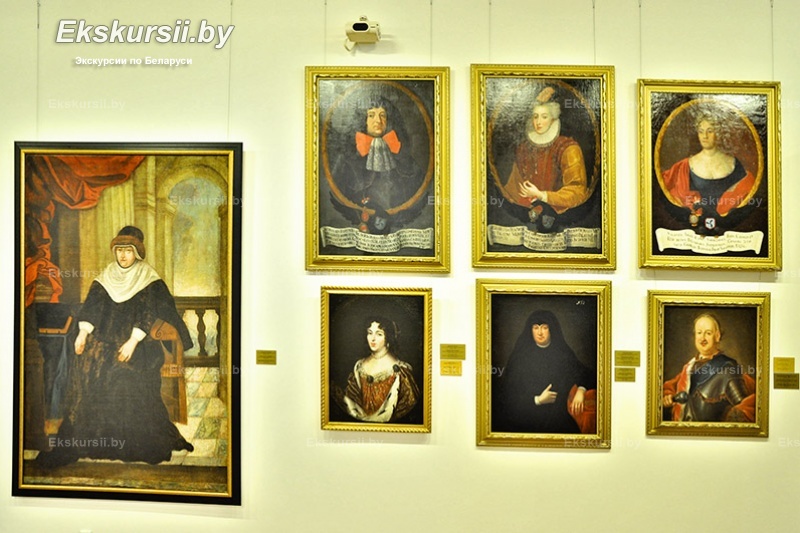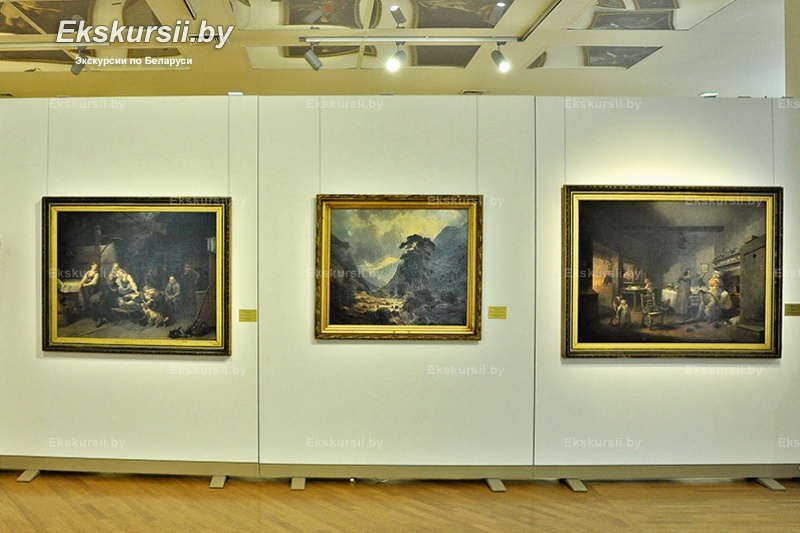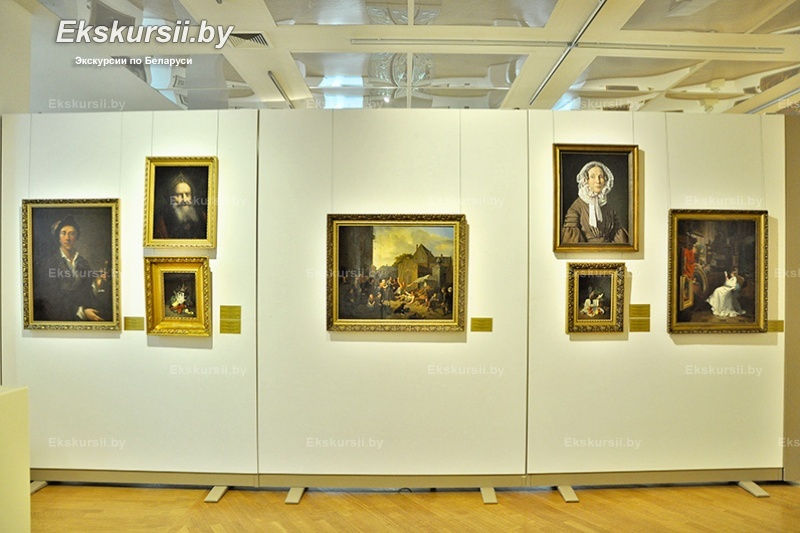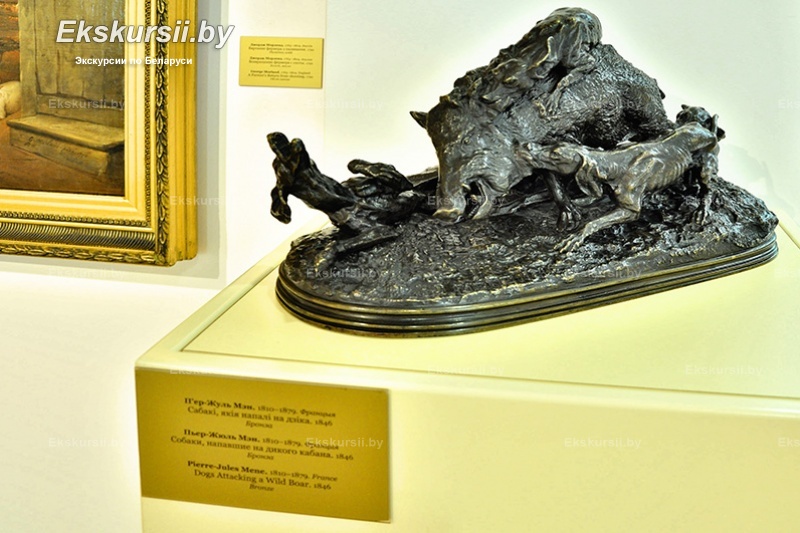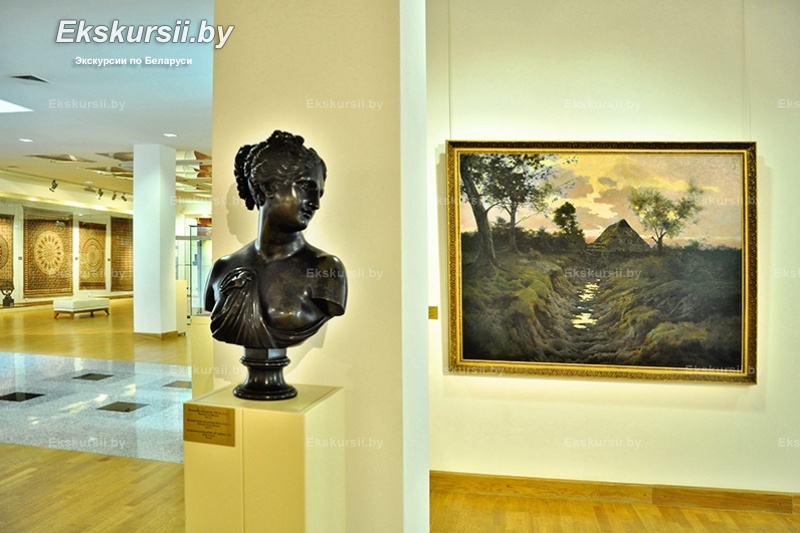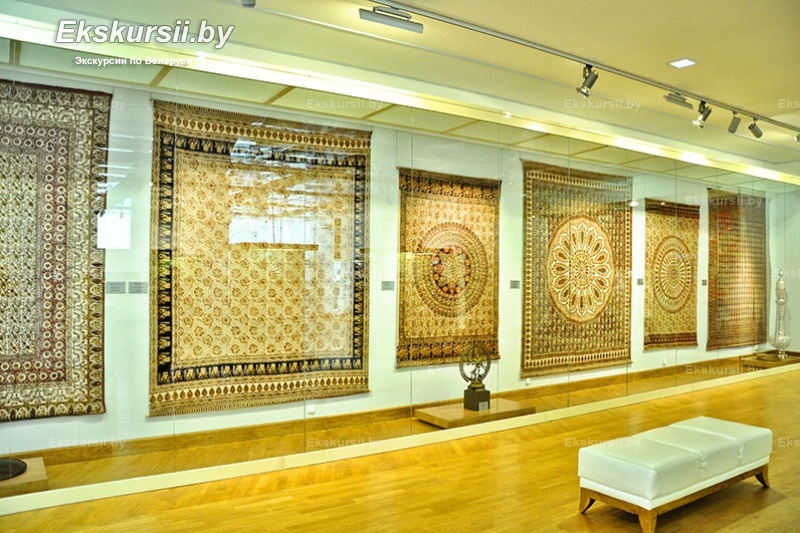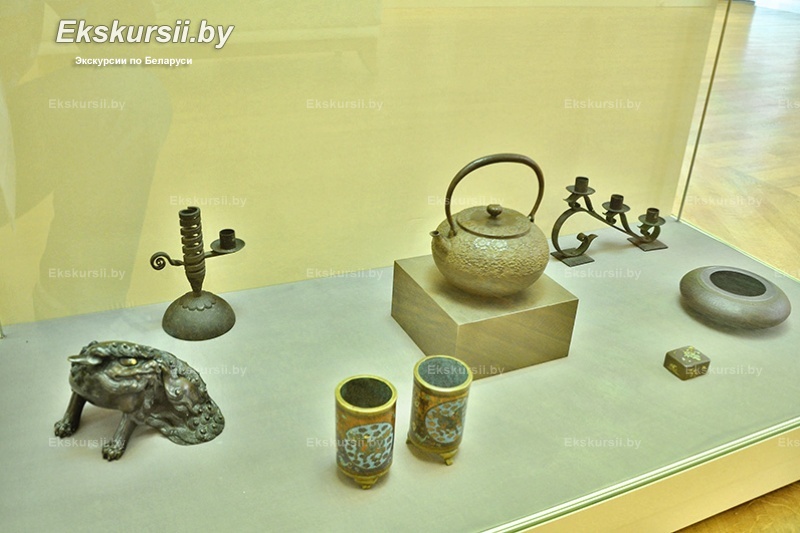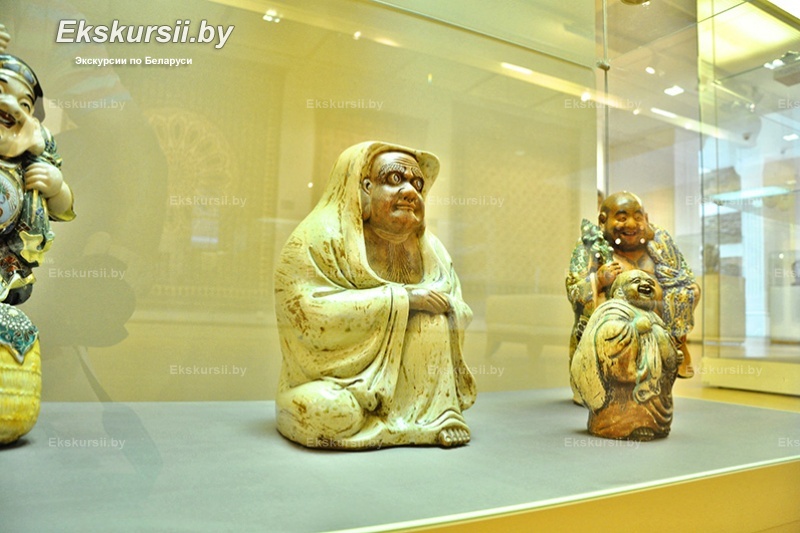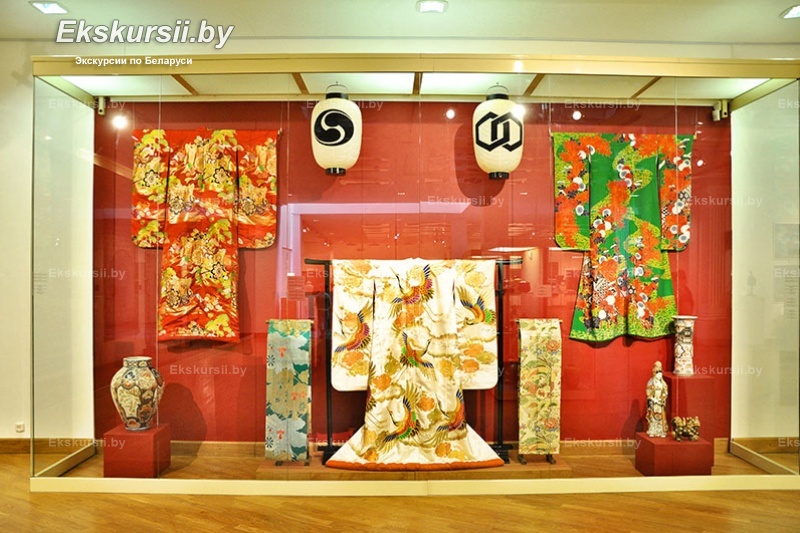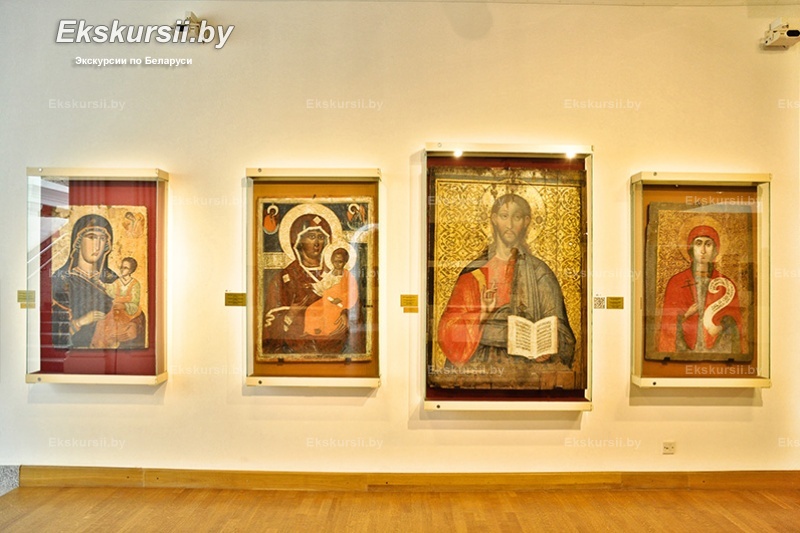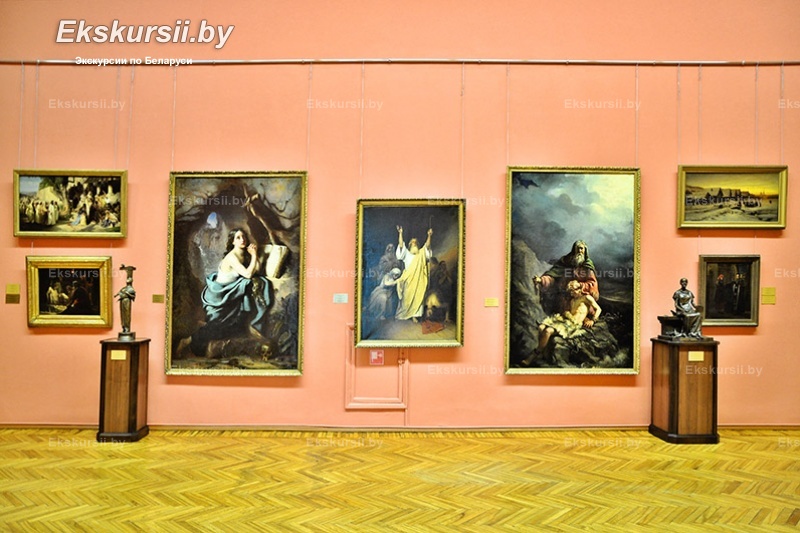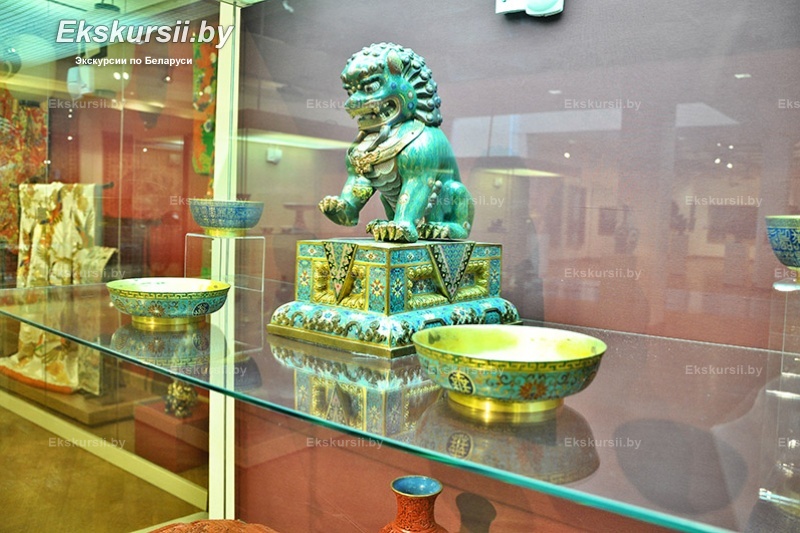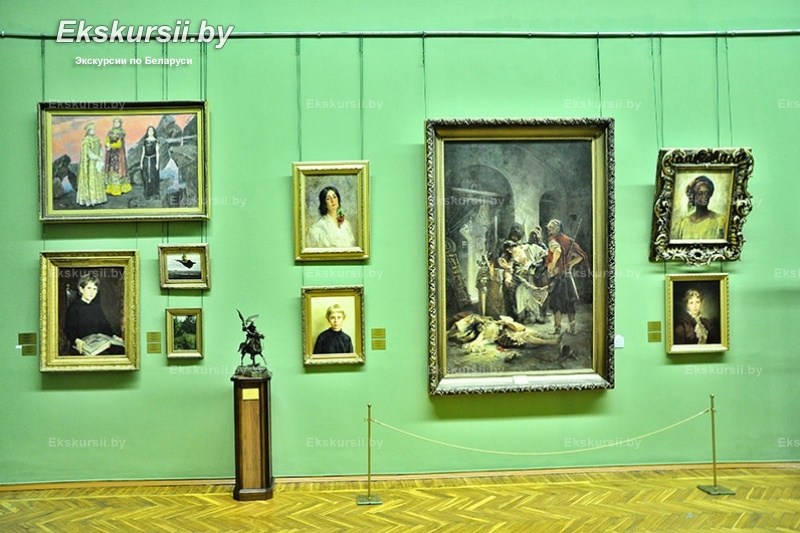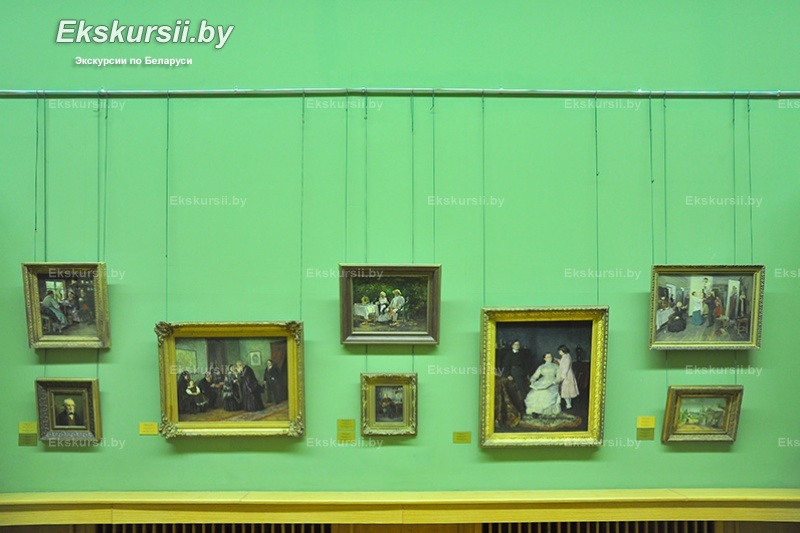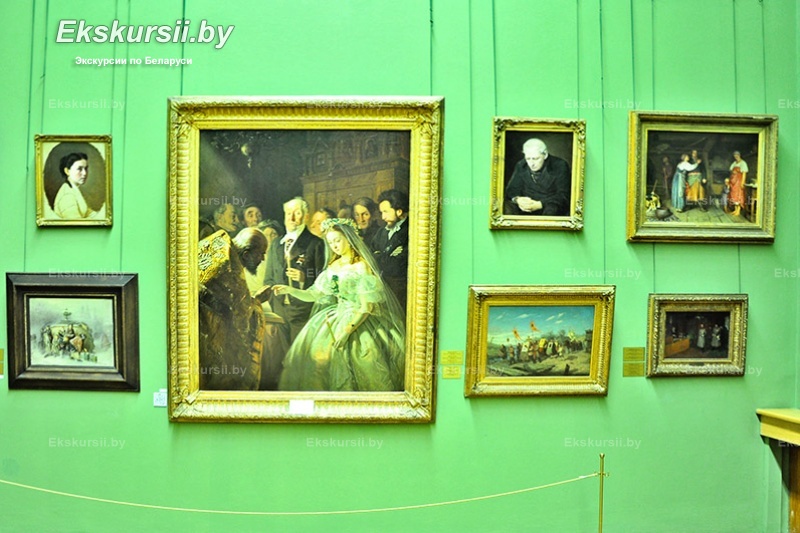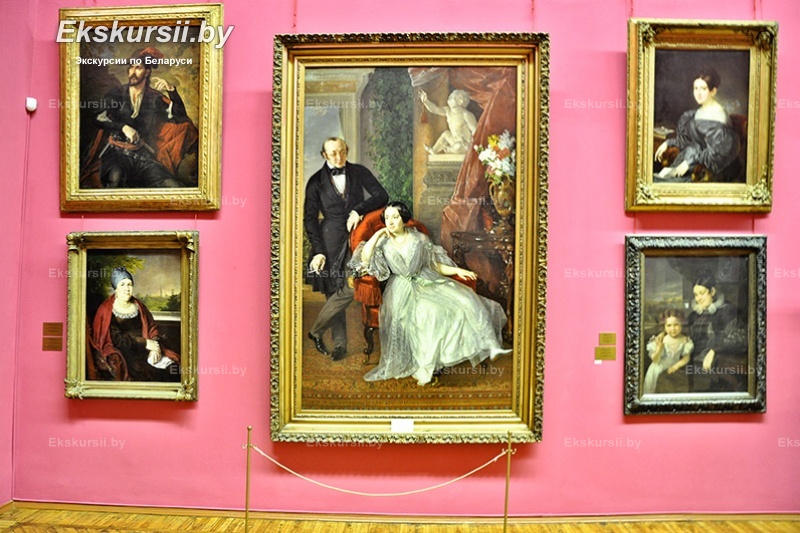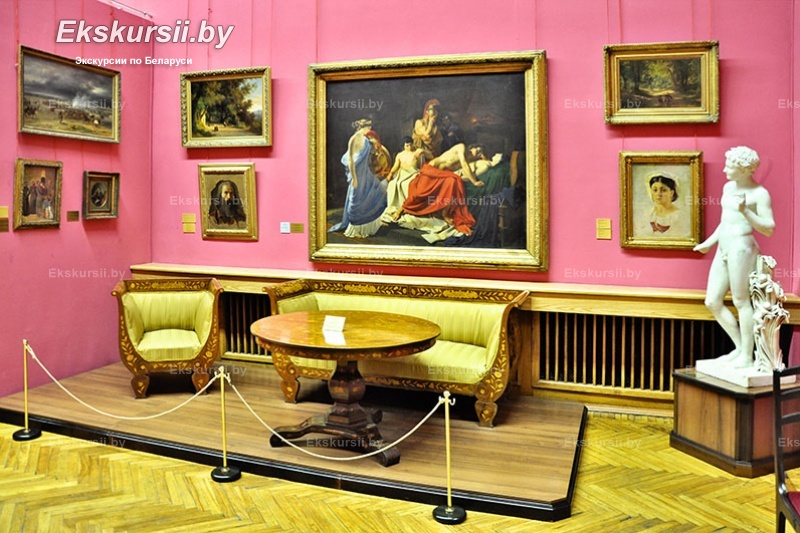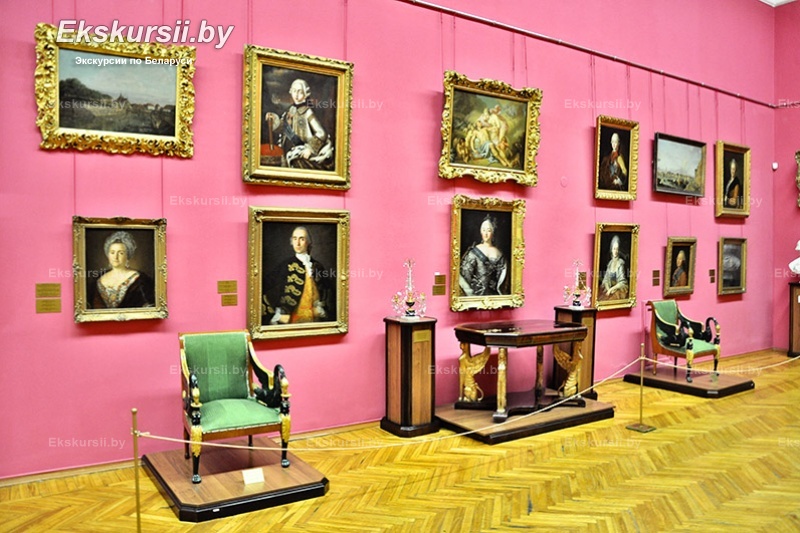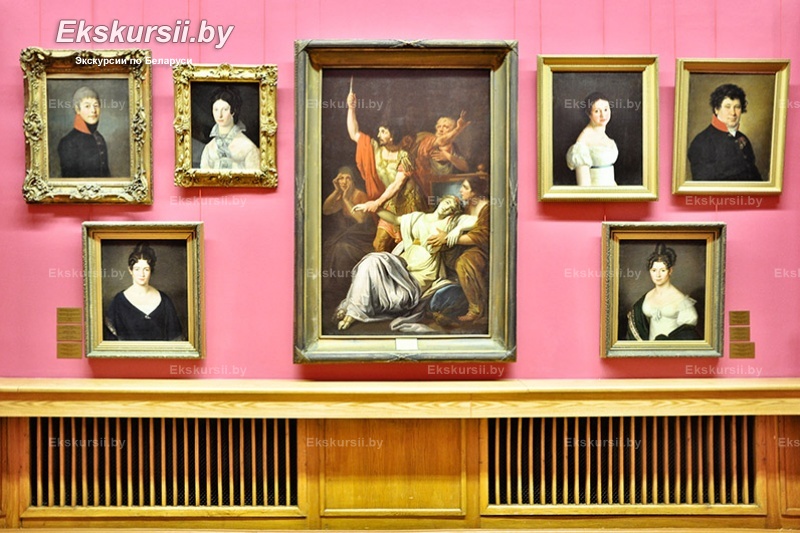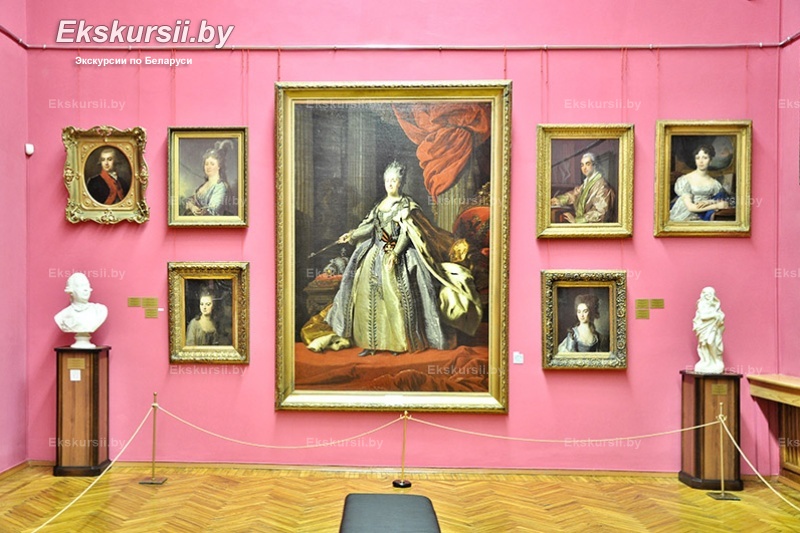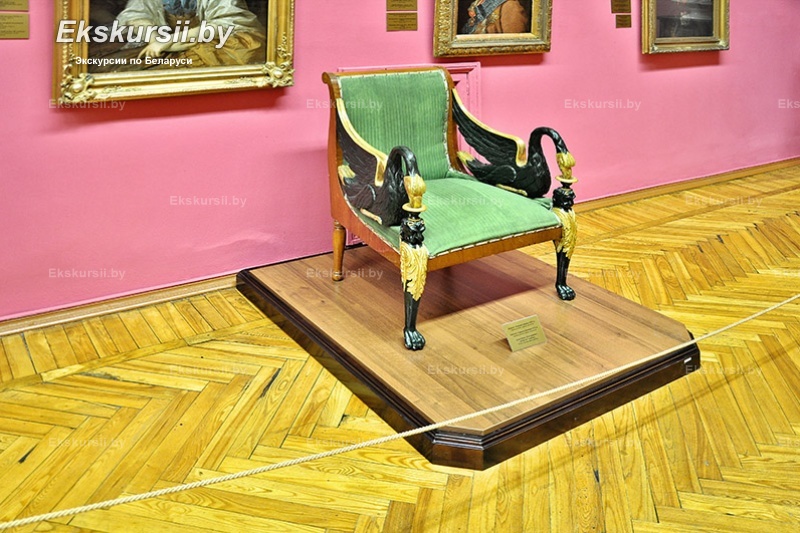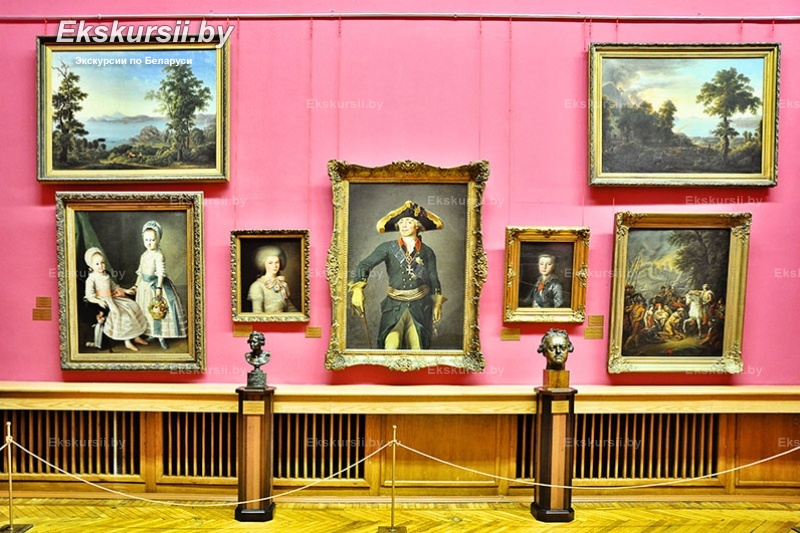The exposition, branches and depositories contain more than 27 thousand works, which form twenty different collections and make up two main museum collections: a collection of national art and a collection of monuments of art from countries and peoples of the world.
According to the decision of the Council of People's Commissars of the BSSR January 24, 1939, the State Art Gallery was established in Minsk. It is located in fifteen halls of the building of the Higher Communist Agricultural School. In addition to the departments of painting, sculpture and graphic arts, a department of the art industry was organized in the Gallery by a special decree.
The pre-war period of the Gallery's work under the leadership of Nikolai Prokopyevich Mikholap (1886–1979), a well-known Belarusian ceramic artist, was a time of intensive formation of art collections. In a short time, valuable works of cult art, large funds of painting, graphics and arts and crafts were collected.
The basis of the Gallery's pictorial collection are works from the fine art departments of the historical museums of Minsk, Vitebsk, Mogilev and Gomel. Several works from their funds were donated by the Tretyakov Gallery and the Russian Museum, the Museum of Fine Arts. A. S. Pushkin and the State Hermitage. The collection of the new gallery also includes works by famous Russian Soviet artists.
After the reunification in September 1939 of the Western Belarusian lands with the BSSR, the Art Gallery received works from the nationalized estates and castles of Western Belarus, including part of the collection of the palace of the Radziwill princes in Nesvizh. The collection was replenished with a rich collection of Slutsk belts, French tapestries of the 18th century, portraiture of the 16th-19th centuries.
At the beginning of 1941 the funds of the Gallery of the BSSR included 2711 works, of which 400 were on display. During the Great Patriotic War, valuable paintings, furniture of the 18th-19th centuries, vases, marble items, clocks, etc. were taken out. The collection of the art gallery ceased to exist.
After the war, only a small part of the works that were on the eve of the war at exhibitions in Russia (a bust of Prince P. A. Rumyantsev-Zadunaisky by F. Shubin), found by Soviet soldiers at the end of the war in the cities of East Prussia, were returned (a collection of portraits from Nesvizh) and devastated Minsk («A Miner with a Light Bulb» by N. Kasatkin, «Autumn» by I. Levitan, «Morning of Spring» by V. Kudrevich were abandoned by the Nazis in the unfinished building of the Central Committee of the CPB).
After the liberation of Minsk, the Gallery was given four rooms in the House of Trade Unions on Svoboda Square. In August 1945, paintings by B. Kustodiev, V. Polenov, K. Bryullov and I. Levitan were purchased. State Museum. A. S. Pushkin gave several paintings by Western European masters, the State Russian Museum - three landscapes by A. Kuindzhi, a landscape by A. Bogolyubov and a ceremonial portrait of Empress Catherine II. Miraculously surviving icons were found at the former Bishop's Metochion in Minsk, where the Belarusian State Museum was located before the war, including masterpieces of Belarusian icon painting «The Nativity of the Virgin» by Pyotr Evseevich from Golynets in 1649, «Paraskeva» and «Ascension» of the 16th century. In 1946, there were already 317 works in the funds. In November of the following year, a permanent exhibition was opened, located in five halls on the second floor of the House of Trade Unions.
The construction of the Art Gallery with ten spacious halls located on two floors and spacious galleries designed by Mikhail Ivanovich Baklanov was completed in 1957. On November 5, the State Art Museum of the BSSR was solemnly opened with the presentation of a new exposition and the All-Belarusian Exhibition ( this was the name of the former Art Gallery from July 10, 1957). The museum's collection included about three thousand works of Russian, Soviet and Belarusian art.
Over the next two decades, the museum turns into a major museum complex. Several branches of the museum are opened: the regional art gallery in Guriny near Mozyr (1978), the Museum of Folk Art in Raubichi (1979), Museum of V.K. Byalynitsky-Biruli in Mogilev (1982), architectural complex of the 16th–18th centuries in Golshany (1989), Palace and park complex of the 15th–20th centuries in Mir (1992).
In the 1980s all collections are actively replenished. The exposition halls on the first floor are adapted for storage. From 1985 designing was carried out, and in 1993 the construction of a new building of the museum began – an extension to the main building (architect V. S. Belyankin). In 1989 the building was transferred to the museum at 25 Kirova Street, where the lecture hall, departments and services of the museum were located.
Since 1993 the museum has been renamed the National Art Museum of the Republic of Belarus. Since 1994 it has had its own archive, since 1989 – restoration workshops with a large staff of restorers – specialists in various fields. The library funds of the museum are constantly replenished with special literature.
In 1999, by order of the President of the Republic of Belarus, a neighboring 5-storey building on the street Lenina, 22.
In 2000 a branch was opened in Minsk – the Museum «Vankovich House». Culture and art of the first half of the 19th century.
The collection of Russian and Belarusian pre-revolutionary, Western European, Oriental, Soviet, Belarusian art now has more than 30 thousand works.
